Operator Field Test: Hornady BLACK 75-grain 5.56X45mm Interlock HD SBR
OutdoorHub Reporters 08.02.17
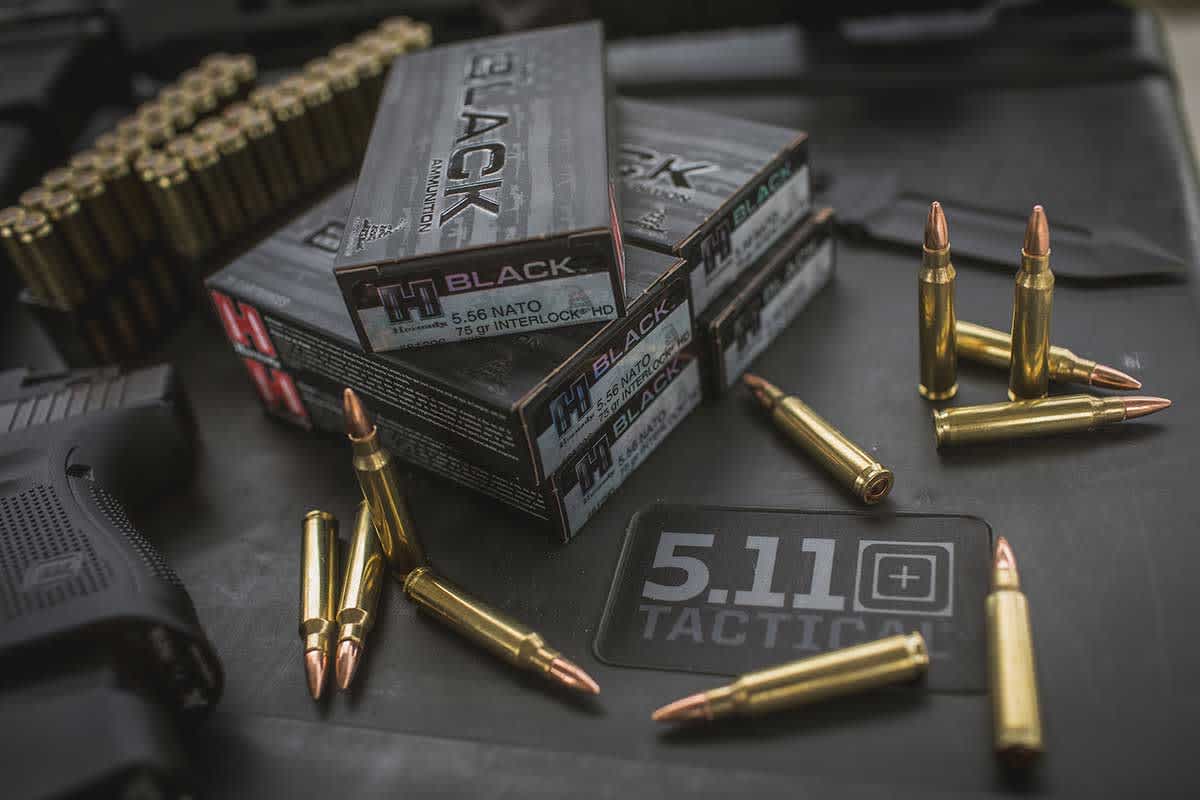
During my time in the military, law enforcement, Government Protection, and the Intelligence community, individual ammunition selection was never an option. Ammunition was and is issued; selection or implementation of new or specialized rounds is a long and vetted process.
Oftentimes, change didn’t come easily. In my experience, I’ve seen the good and the bad with ammunition selected for operational purposes. What I have come to learn is much like tools, ammunition needs to be matched to its intended use, which could vary from penetrating barriers in short-barreled rifles (SBRs) to performing well in competitions. I set out to take a hard look at a few of Hornady’s current ammo offerings.
At the Asymmetric Solutions Special Warfare training center in Perry, Florida — partnering with Florida Bullet Tactical Systems — our team took the opportunity to shoot and test several different loads from Hornady’s new BLACK line of rifle ammunition. A sample of the calibers tested included: Critical Duty 135-grain 9mm; 73-grain ELD Match 223; 168-grain ELD Match 308; and both the 62-grain and 75-grain 5.56 NATO rounds from its BLACK line.
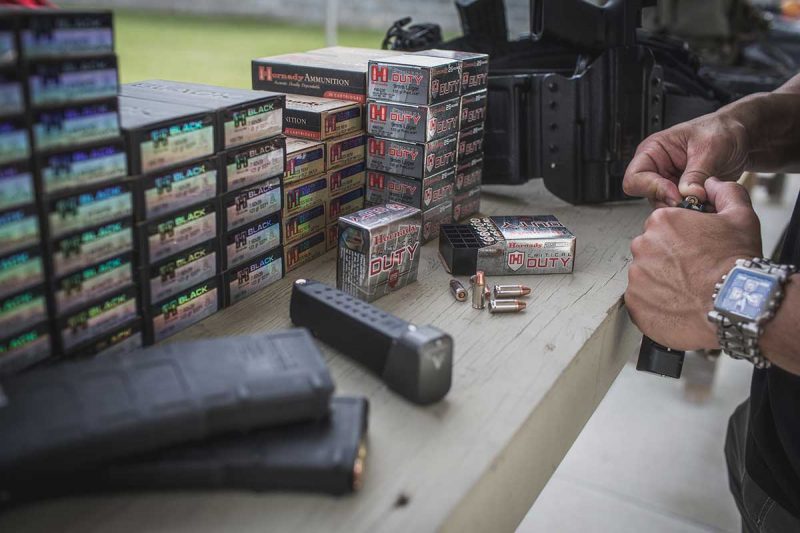
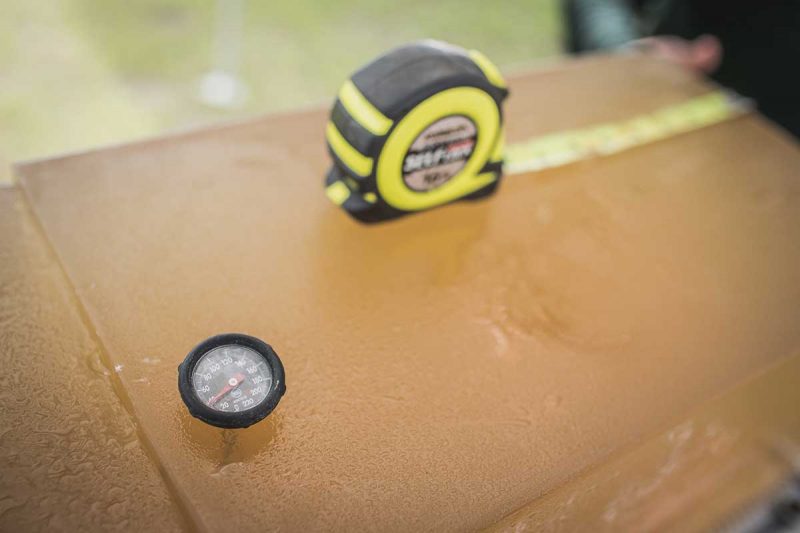
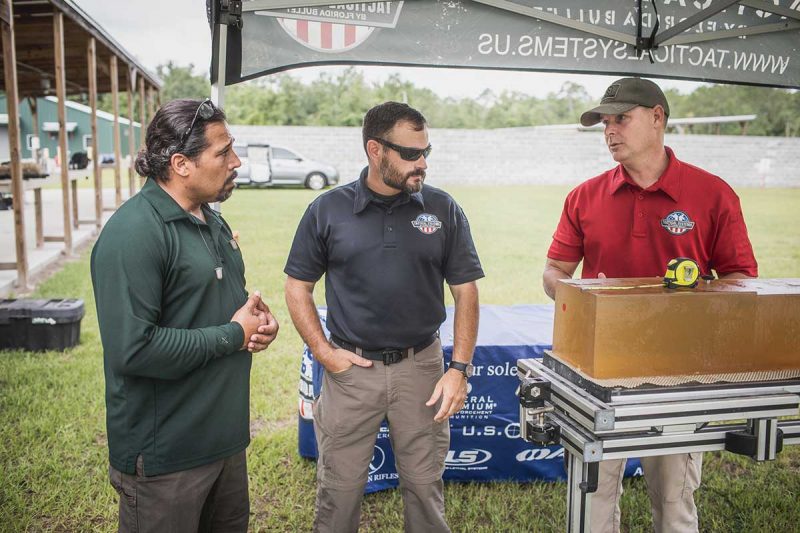

All Hornady ammunition tested was accurate and performed as advertised on their website. That said, one load in particular stood out — the 75-grain 5.56x45mm NATO Interlock HD SBR.
The 75-grain HD SBR is the defensive rifle version of the Law Enforcement 75-grain TAP SBR round, and the description below is straight from Hornady’s website:
5.56 NATO 75gr. InterLock HD SBR Black is designed specifically for 10.5″-11.5″ SBRs by using proprietary propellant technology and a bullet designed with technology from industry leading Critical Duty FlexLock bullets. This round provides exceptional ammunition performance in SBRs suppressed or unsuppressed, with virtually no flash or residue, dramatically reduced sound signature, will not foul or overheat suppressors, uniform velocity and accuracy, and provides controllable rate of fire in automatic platforms. Designed to meet the requirements of the FBI protocol, this round is the optimum choice for 10.5″-11.5″ barreled 5.56 rifles.
That’s a very tall order to fill in a defensive round!
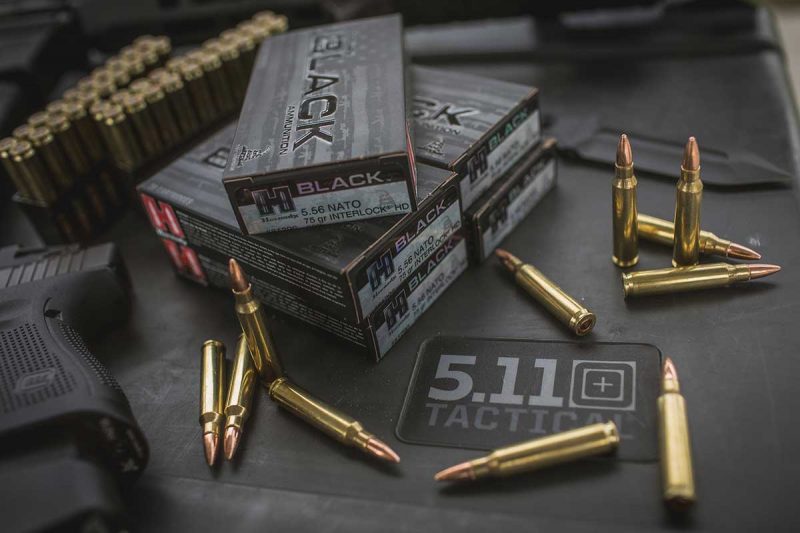
Putting It To The Test
To see if this ammo stacked up to Hornady’s claims, we decided to do some of our own testing. With the assistance of Chris McFarland and Aaron Murray, Subject Matter Experts from Florida Bullet Tactical Systems, we conducted ballistic testing in accordance with the FBI standards using 10 percent ballistic gelatin at a temperature of 40 degrees, 10 feet from the muzzle to the front face of the gelatin block.

We also used 15-inch x 18.25-inch laminated automobile safety glass set at a 45-degree angle horizontally and 15 degrees to the side with the gelatin block 18 inches behind the glass at a distance of 50 yards. (See sidebar at the end of this article for more on this testing protocol.)
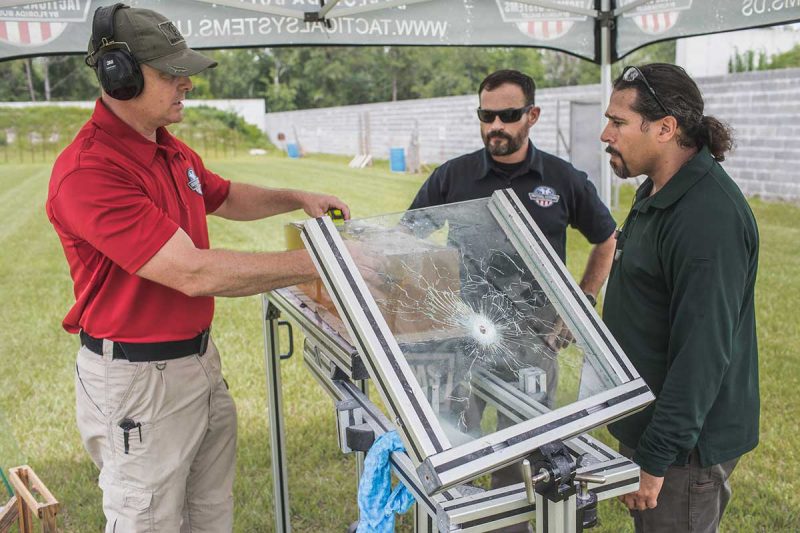

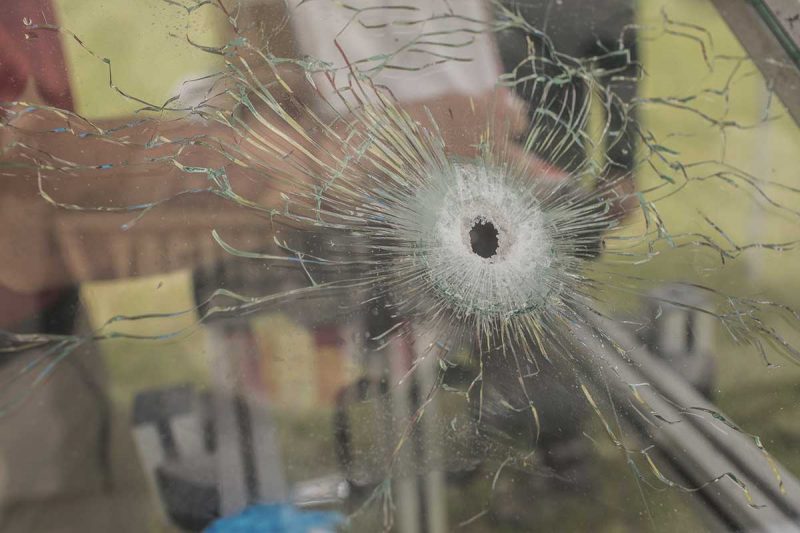
At 25 yards, we cycled through several 30-round magazine dumps with a Knights Armament Company SR15 11.5-inch CQB. We fired as fast as the trigger would allow to test for a lower recoil impulse, muzzle rise, controllability, feeding and extraction dynamics. This was performed in an attempt to catch the fireball of unburnt powder, which is fairly common when shooting short-barreled rifles.
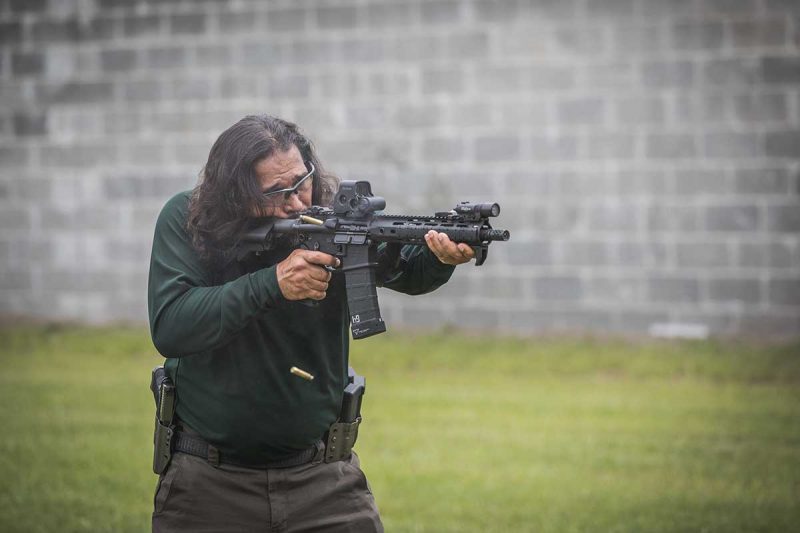
Throughout the day, and later into the evening hours, the camera was unable to catch the muzzle flash, which is consistent with the manufacturer’s claims. The recoil impulse was noticeably softer compared to other 5.56 rounds, and allowed us to maintain a fist-sized group, pressing the trigger as fast as it would reset. All rounds fed and extracted reliably.
At 100 yards benched, we shot for accuracy with a 14.5-inch Veritas Tactical rifle using a Vertex EDC Principal Briefcase as support. As with the previous test, we engaged the 18-inch steel silhouette targets rapidly, with the red dot never leaving the upper A zone of the target. This resulted in a controllable rate of fire and practical accuracy well within any defensive situation.
The Takeaway
Bottom line — the Hornady 75-grain 5.56x45mm, Interlock HD SBR performs how Hornady claims it does!
If you are looking for a
- 56x45mm NATO round for your defensive rifle that is MOA accurate
- meets the FBI ballistic standards in bare gelatin and through automobile safety glass
- feeds and functions reliably in short-barreled direct impingement or gas piston guns
- suppressed or unsuppressed with lower decibels than other rounds on the market
- very little recoil and muzzle flash
then the 75-grain 5.56X45mm NATO, Interlock HD SBR round from Hornady’s BLACK line may be the ideal defensive rifle round for you.

About the Author: Dave “DB” Benton (below) has a combined 24 years serving in specialized teams and leadership roles in the military, law enforcement, protective security, and intelligence community. He has held many positions on various teams from assaulter, sniper, breacher, tactical medic, team leader, and instructor positions from explosive entry to SWAT.

Sidebar: Chris McFarland, High Risk Operations Instructor for Florida Bullet, on testing protocols: “The FBI standardized ballistic testing procedures were never intended to be used for rifle caliber projectiles. However, it is the only testing procedure that is well-known and documented. When testing rifle calibers, the FBI recommends that the gel be shot at the rifle’s zero distance or likely engagement distance. This distance can vary based upon the user’s intended purpose for the ammunition. We typically test projectiles in bare gel and auto glass. This is kind of the easiest and hardest mediums a projectile will encounter. This is not as much of a concern for civilians as it is for the law enforcement community. Almost half of all law enforcement involved shootings occur in or around vehicles. It is absolutely essential that your duty ammunition penetrate this barrier and be lethal. A limited penetration round that fragments on bare gel usually is a complete failure in this area.”

